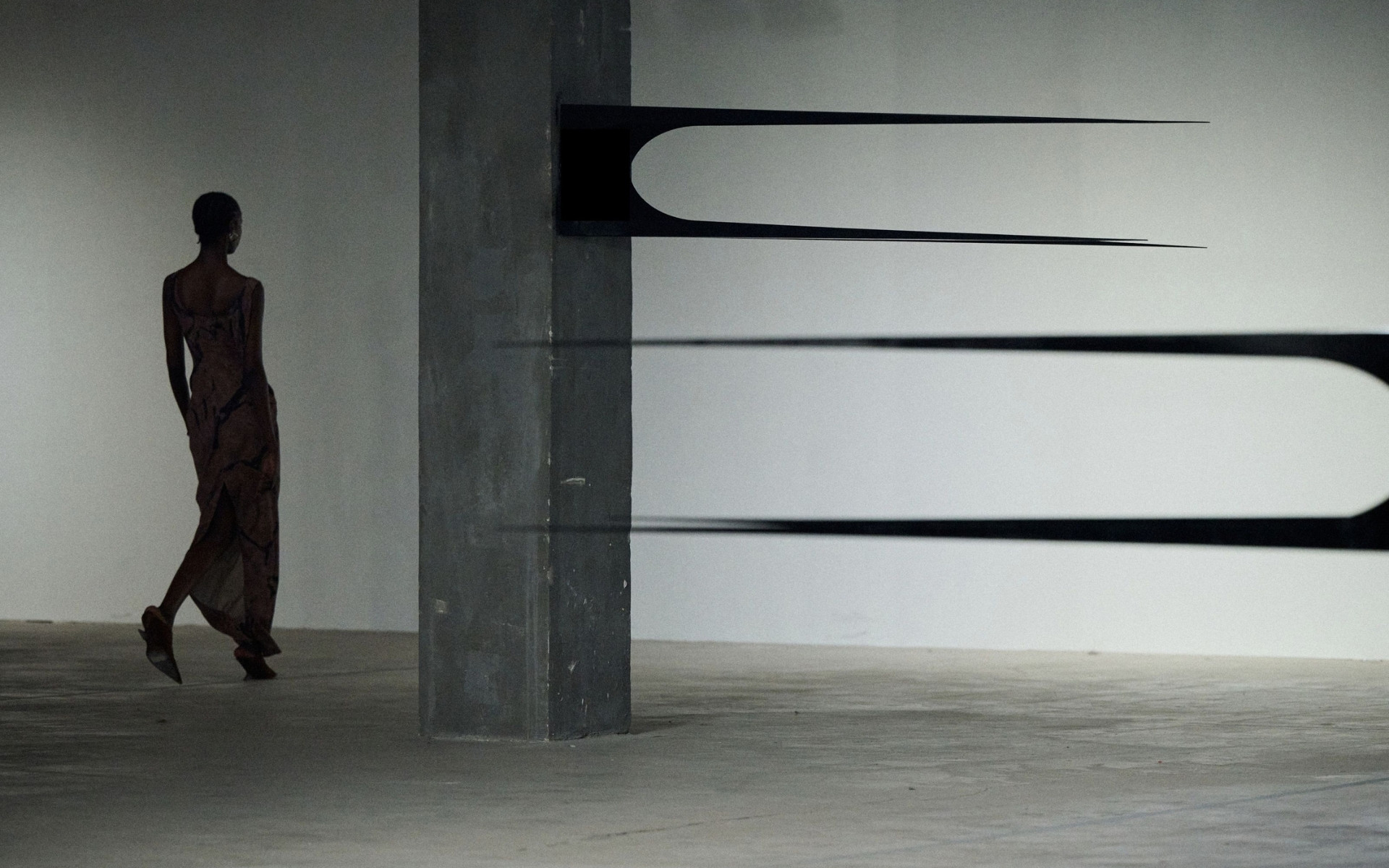
If your calendar is in sync with the fashion weeks, you will know that apart from the big four—New York, London, Milan and Paris—other cities such as Copenhagen and Shanghai are coming out on top in the fashion week circuit. Shanghai, for instance, has become a regular stop for international press and buyers. For a populous city that millions call home, there’s never a dearth of talent—new and emerging designers would make their grand entrance every season. This happens in the nick of time, as the industry is in dire need of an influx of fresh perspectives, in the hope of challenging existing norms and addressing evolving needs and societal shifts.
As one of the contributors to the global luxury market, the city has a domestic market that is large enough to support not just the local fashion scene but also the regional—LSoul from Vietnam made its debut show last season at Shanghai Fashion Week. The city is at the pulse of it all; named China’s window on the world, mushrooming independent brands and multi-label stores such as Labelhood, XC273, or Tube Showroom scattered all over the city would alter one’s experience with Asia-based fashion. On and off the fashion calendars, brands like Shushu/Tong and Mark Gong are some of the examples that took the internet by storm, gaining attention from prolific fashion clients, stylists and of course, celebrities—Lisa from Blackpink stunned the Oscar 2025 red carpet with a custom Mark Gong tuxedo look and Sabrina Carpenter showed up at the Grammy’s after party in Shushu/Tong.
As the next Shanghai Fashion Week inches closer, here are some of the emerging designers and fashion labels that we have our eyes on and should be on your fashion radar.
Oude Waag
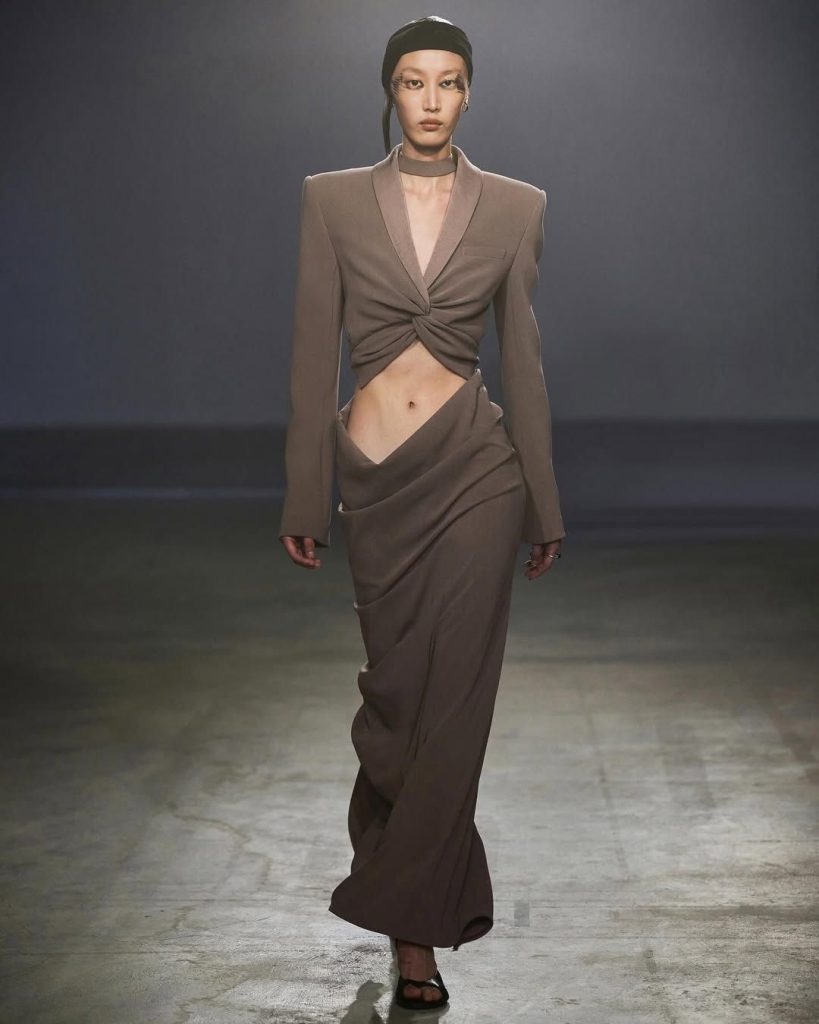
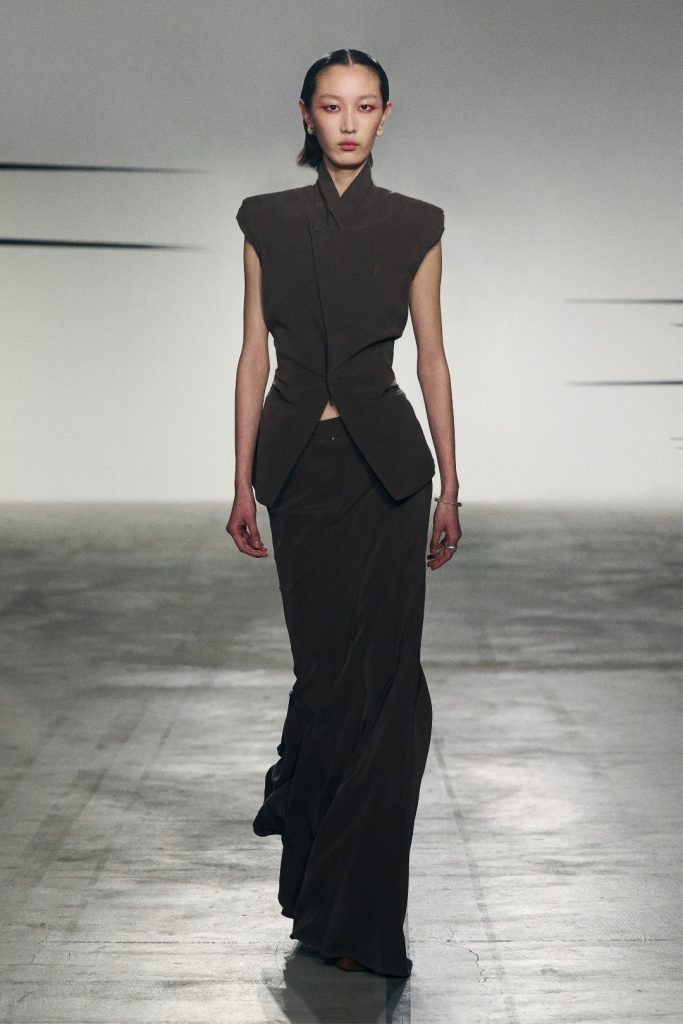
Named after a street in Antwerp, Oude Waag is a Shanghai-based fashion brand by Jingwei Yin. The label focuses on razor-sharp cutting that contrasts wonderfully with soft drapes. Albeit favouring a cooler palette, the designs are filled to the brim with great vehemence—those silhouettes that skim the sinuous body are scene stealers. Before establishing his brand, the Chengdu-born did stints at both Haider Ackermann and Hussein Chalayan—both designers known for their subversive approach to fashion. His experience set the tone of his brand, where emotions and intimacy are translated into clean designs that master the art of subtlety; Oude Waag whispers expressively.
The lineup of Yin’s collection is what we’d call “round the clock”—from day-to-day pieces like blazers to evening numbers such as floor-grazing dresses. There’s a huge selection of commercial hits, even though most of them are based on or draw inspiration from artworks, especially sculptures. The twist-knot, for instance, is a highlight of the Spring/Summer 2025 collection named “The Paramount Soul”, mimicking the Developable Victory Column by Antoine Pevsner, whereas the drapes are modelled after the Hellenistic bust of a veiled woman, an ancient Greek statue. The crux of Oude Waag, despite its artistic touches and cultural references, is an exploration of emotion—named after a gospel hymn, the collection stems from the experience of attending a religious funeral, which invited discussion and conversation on the topic of death and funerals.
Yayi Studio
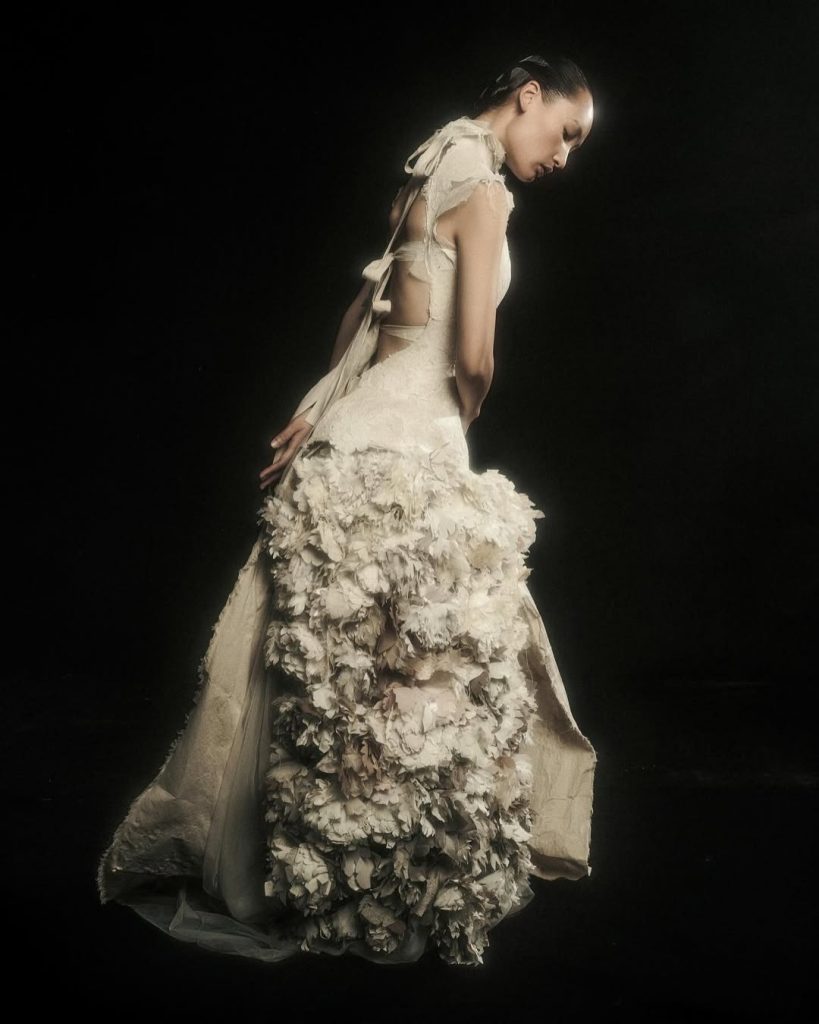
Yayi Chen’s debut collection, “It Is Not Spring, Until All Flowers Blossom” in 2022—presented in the format of a fashion film—introduced me to this namesake brand, and I’ve never stopped following since then. As a budding talent in the industry, Chen never shied away from experimentation, be it the way she tells her story through fashion and performing arts or the design direction she’s heading towards, which then earned her a nomination for the LVMH Prize in 2024. Most of Chen’s pieces capture the tenderness of a female wearer, yet are bold enough to take your breath away.
Take the papier-mâché dress from Spring/Summer 2024 as an example. Not only is the dress a flower bed for the 80 hand-crafted flowers—made from dead stock fabric—but the gentle yet impactful juxtaposition between the rice paper and lace also reflects the sense of resistance that the brand is deeply rooted in. Flowers seem to be a mainstay for Chen; not the cheerful early blooms you are thinking, but one that blossoms in the dormant winter, photographed and kept in an antique sepia-tinted photobook.
Weiraen
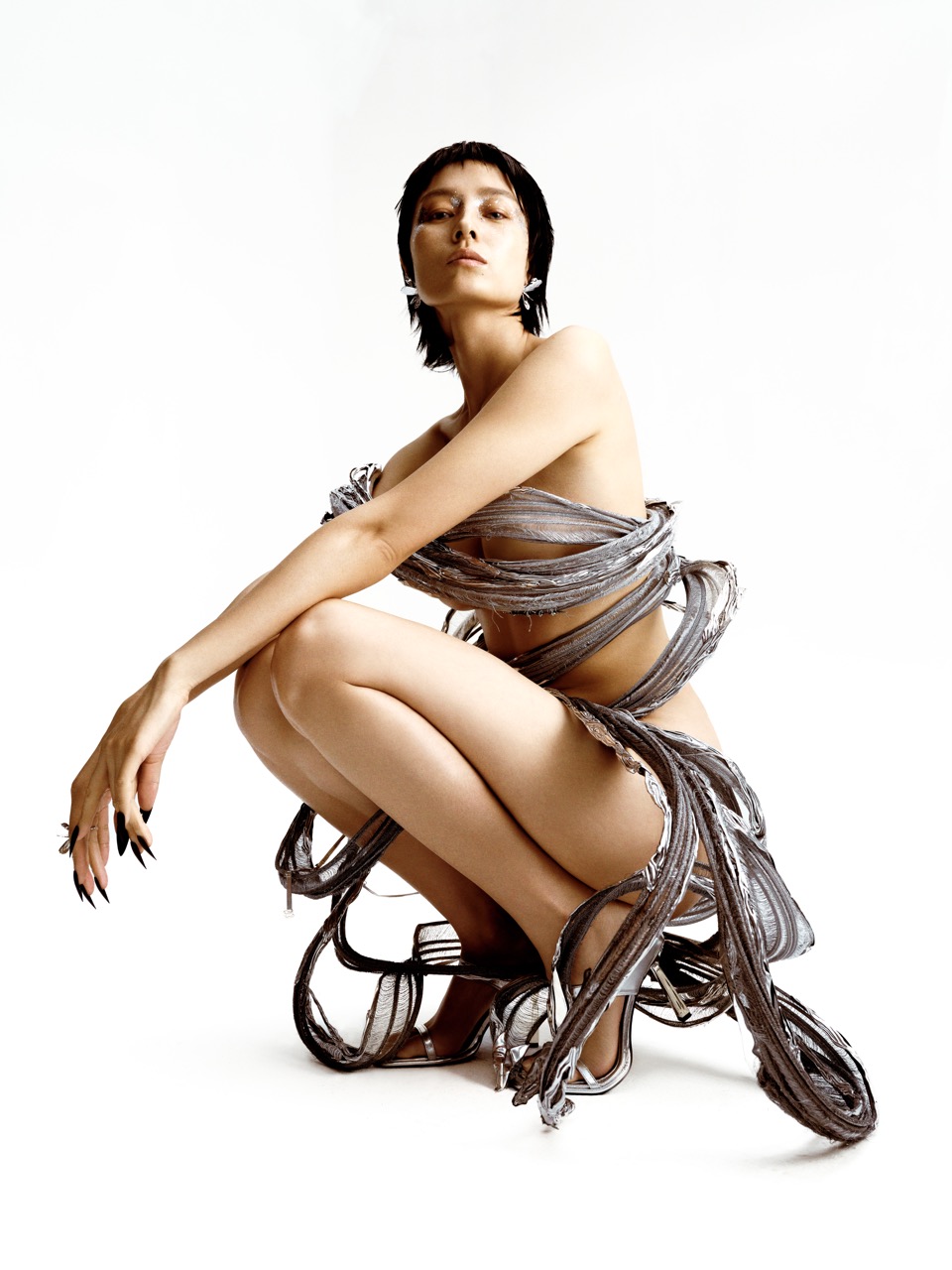
Fashion on the runways is typically divided into two camps: the commercial darlings and the experimental avant-garde, and Weiraen is the latter. Favoured by fashion editors and celebrities such as Lorde, Julia Fox, Halle Bailey, and more, the emerging brand is the brainchild of Wei Ran. The designs at Weiraen are commonly described as otherworldly, and we couldn’t agree more. The advent of Metaverse has blurred the border between the virtual and the real world, and from afar, these pieces might even look like digital art to many—they look outlandish and unreal.
Her Collection 04—presented at Shanghai Fashion Week as part of the Labelhood showcase—was jaw-dropping despite it being her sophomore show. Through her futuristic lens, Weiraen is a portal that transported us to an ethereal world, one very much inspired by The Garden of Earthly Delights by Hieronymus Bosch. Silver-threaded knits and liquid-like 3D-printed elements are layered to create an intricate tide that is distorted. Knitwear is deconstructed—floating like a second skin—and on the other hand, dresses are made with seashells that mimic a cascade of scales. There’s a hint of unsettlement, eerie almost, enthralling regardless.
Ao Yes
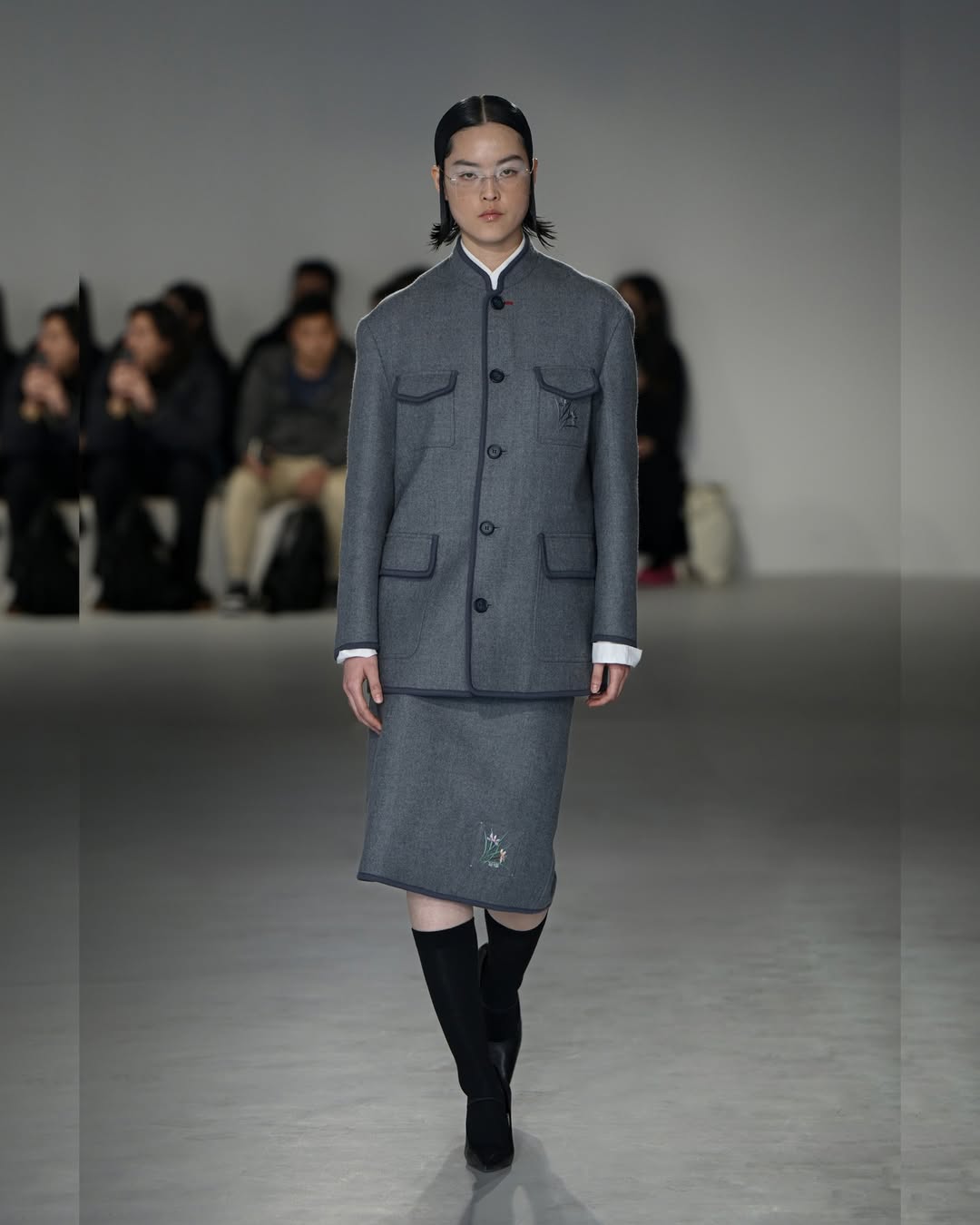
There’s a surge in cultural pride on a global scale, driven by a cultural renaissance where younger fashion consumers express individuality and cultural confidence by blending traditional fashion aesthetics with modern designs. In Malaysia’s case, we have brands like Anaabu, Behati, and Shao Fen, while in China, the Neo-Chinese style is also on the rise. Emerging labels are all riding on the crest of this wave, and Ao Yes is one of the emerging labels that quickly became a new vanguard.
Co-founded by former fashion editor of Vogue China, Austin Wang and Yansong Liu, who graduated from Tokyo Bunka Fashion College, Ao Yes was born during the pandemic. From jackets that take after the design of a Zhongshan suit—with the iconic four pockets—to genderless silhouettes that were predominantly draped by female intellectuals in the Republic era, Ao Yes is well-known and critically acclaimed for its competency in weaving the pulse of the future with the heart of the past. The successful collaboration with Inditex’s Zara this year has also cemented the brand’s position and solidified its ability to design contemporary pieces that resonate with and captivate the international market, while representing the culture thoroughly.
swaying/knit
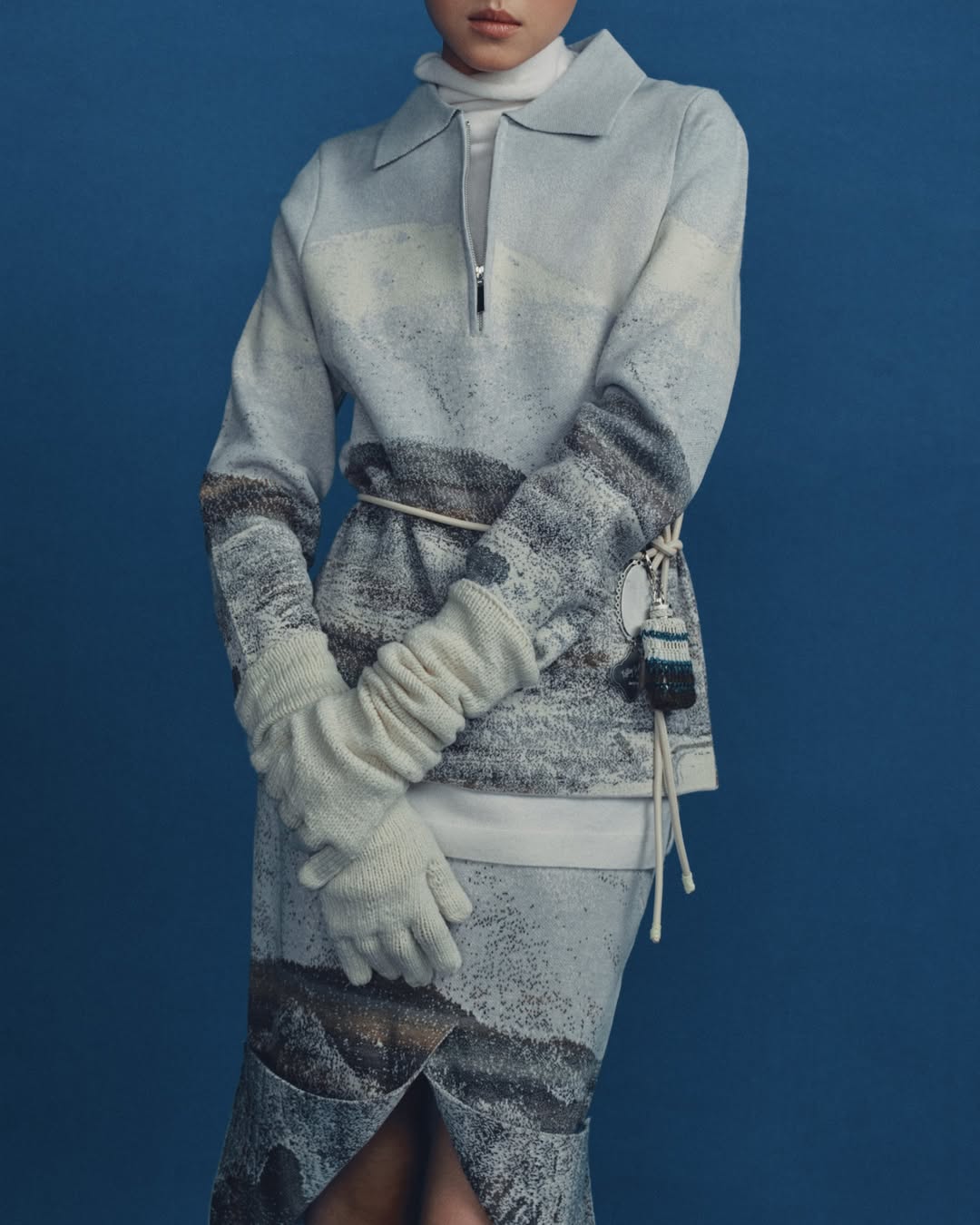
Like the name suggests, swaying/knit is a brand that knitters would appreciate, whereas “swaying” reflects the designer Sasha Wong’s fondness for how the knits interact with the body, creating free and fluid movements despite the material being engineered to be formidable through the meticulous tension gauge. At the last season of Shanghai Fashion Week in March, swaying/knit presented its Fall/Winter 2025 collection that’s inspired by female knitters in the wild—the runway was designed to mimic a homey cottage with knitters who kept their hands busy with the yarns before the models took over the stage. In a time where fashion is all about making a (loud) statement, Wong presented a close-to-earth lineup, quite literally. Fall-ready pieces are dipped in a warm palette that echoes the fall foliage, and her effort in shifting the spotlight back to the foundational part of garment-making did not go unnoticed. Tenderly and sedately, taking one step at a time.
What stood out to us was how the brand is capable of re-framing our impression of knits and their possibilities through this collection. Albeit being more pared back as compared to its previous collections that were bolder and comparably whimsical, it proved its competency in balancing the scale with designs that are commercial and straightforward, ironing out the topsy-turvy in the fashion scene as we encountered a significant consumption slowdown.
Liwen Liang
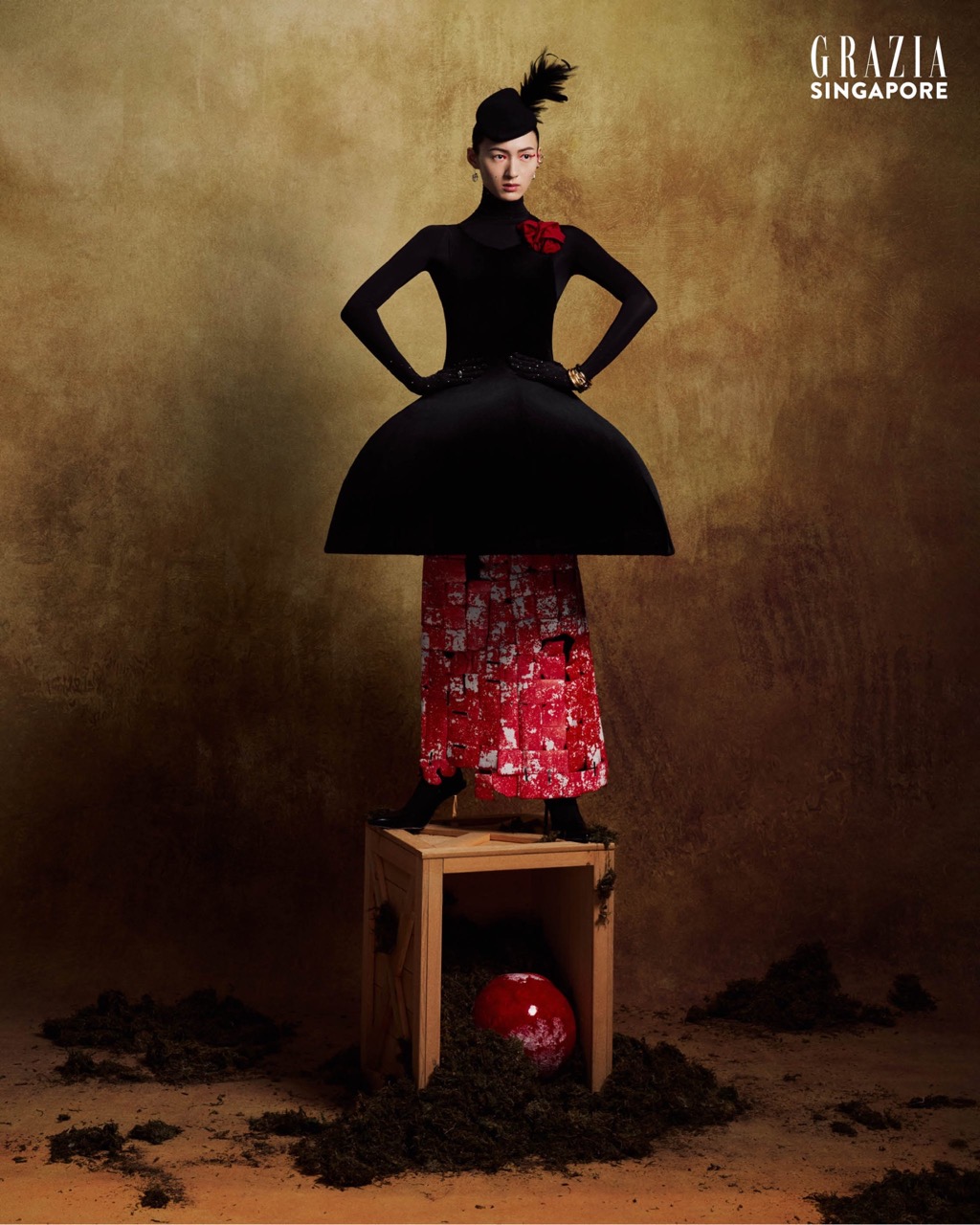
Liwen Liang hails from a city with a 2000-year history of porcelain production and a family with three generations of ceramic craftsmanship experience. The young designer is combining traditional Chinese ceramic techniques with 21st-century technology to create pieces that can only be described as wearable sculptures. His method, for which he has applied for a national invention patent, involves firing millimetre-thin pieces of ceramic which he then bonds with fabrics to painstakingly sew into dresses and skirts. His creations have been shown at fashion weeks in London and Milan, requested by celebrities, and appeared on covers of fashion magazines across the globe. Describing his clothes as “wearable art”, Liang continues to push creative and inventive boundaries with his stunning creations, and is a key example of the Chinese creatives melding heritage with a modern zeal for revitalisation.
Shuting Qiu
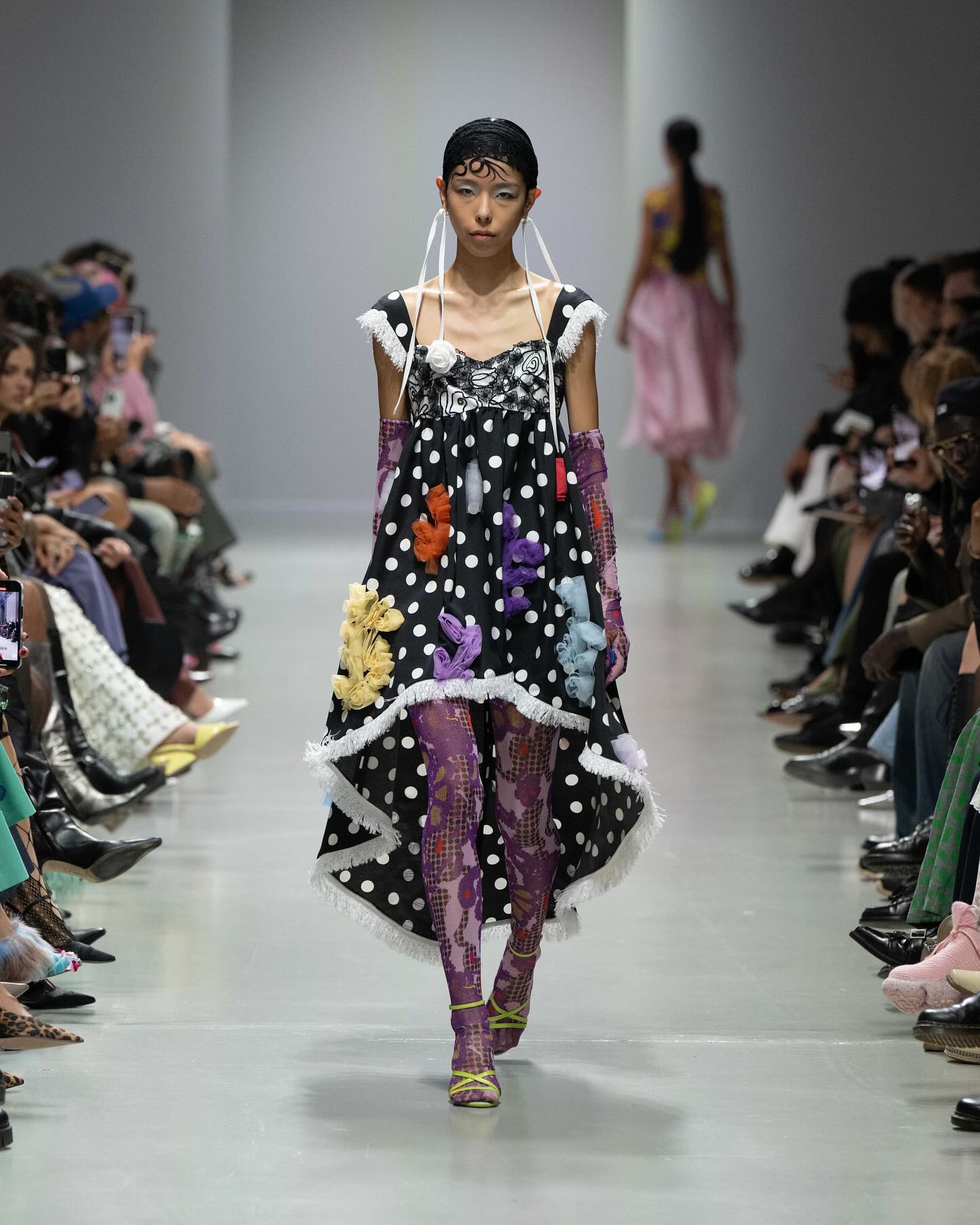
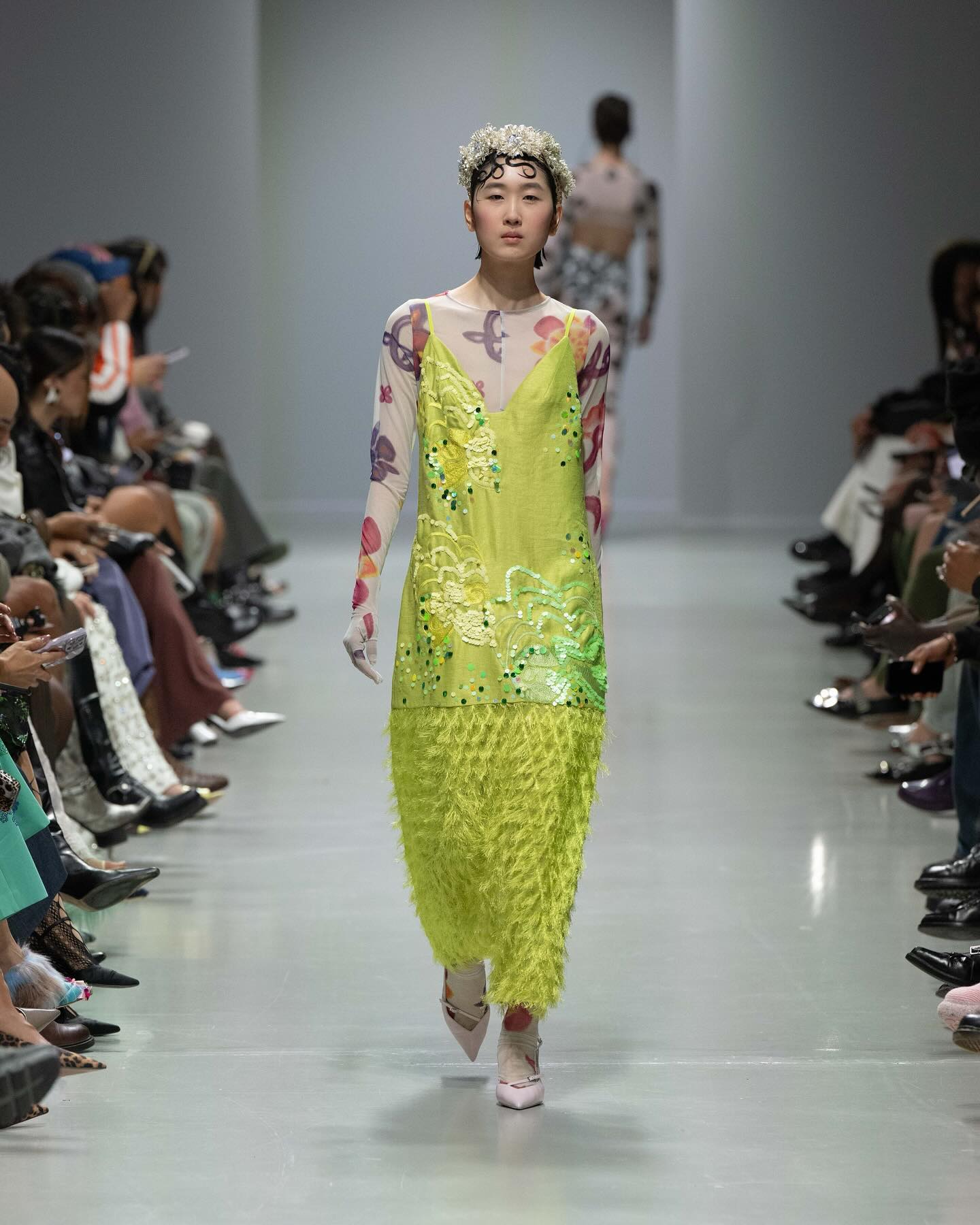
This eponymous label by Hangzhou-born designer Shuting Qiu is a tribute to Chinese heritage that buzzes with reinventive energy. Qiu’s creations are vibrant and lively, with patterns and vivid colours being a self-described signature that she deftly employs to reflect her varied sources of inspiration. Qiu’s Fall/Winter 2024 collection, which showed at Paris Fashion Week, drew direct inspiration from Vietnamese áo dài—she transposed the garment’s traditional side slit and floral and geometric motifs onto bodysuits, sheer jackets, and more. The roots of the craftsmanship behind the pieces, however, remain firmly tethered to her home. As she shared with GRAZIA Singapore, “fashion designers of the new generation, like me, who have studied abroad to pursue our fashion education, have the opportunity to take our hometown cultures, translate them in a modern and contemporary way, and bring that to the global stage.” Qiu has already received international acclaim, with the brand being shortlisted for prestigious fashion awards like the BOF China Prize and the LVMH Prize, and there’s no doubt her rising star is one to keep an eye on.
This article originally appeared on GRAZIA Malaysia. Additional reporting by Anika Deshmukh.
READ MORE
Major Moves: Proenza Schouler Names Rachel Scott As Creative Director
Asian Celebrities Are Quietly Stunning At The 2025 Venice Film Festival
